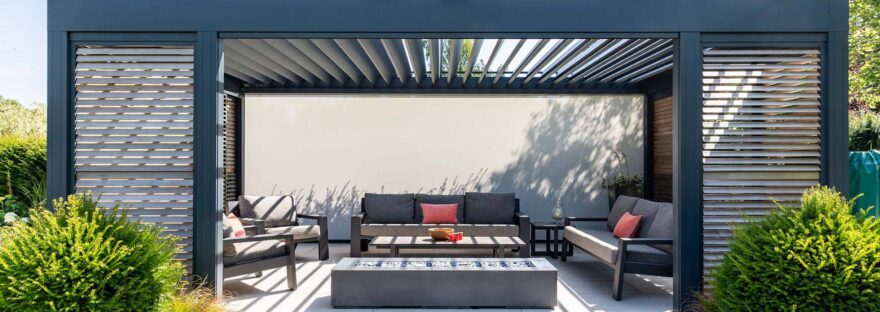Security guards monitor entry points and patrol property to ensure security protocols are being followed. They also collaborate with law enforcement officers during investigations and participate in training drills to keep themselves prepared for various situations.
Although private security guards do not act as police officers, they can make arrests under certain conditions, outlined in the Police and Criminal Evidence Act 1984. This is permitted only if there are reasonable grounds to suspect an offence. Contact Baltimore Bodyguards now!

Security guards are constantly on the lookout for any behavior or activity that could suggest danger. They need an acute sense of smell along with excellent hearing and eyesight to be able to accurately interpret what they see and hear. They also need to be able to pinpoint the source of an odor, such as a chemical leak or burning cable, so that authorities can be alerted.
One of the biggest reasons a security guard has to have such a great sense of smell is that they often need to keep an eye on multiple people and situations at once. A good security guard should be able to do this while remaining visible and not interrupting the work of others. Having the ability to maintain order is also vital, especially when dealing with large angry crowds. Security guards need to be able to keep their eye on the prize and not get distracted by other people or events going on around them.
While on the job, a security guard must be aware of their surroundings at all times. They should perform ocular pat-downs of everyone in their sight line to be sure that they can detect anything strange or unusual. It is also a good idea for them to be able to remember what they see, so that they can report it later on to authorities or paramedics. Having a short attention span, being disengaged, or having weak sight and smell will not make you a very effective security guard.
In many cases, a security guard will need to remain on the job even after he or she has successfully averted a crisis situation. This is to ensure that no other issues have arisen, and to act as a backup in case the situation turns out to be more serious than originally thought. It is important for a security guard to have a clear recollection of the incident so that other security personnel or police officers can take action as needed.
Excellent Hearing and Eyesight
Security guards need to have excellent hearing and eyesight so they can be on the lookout for anything that might be a threat. They have to be able to detect things like a chemical leak or an explosion and know which direction it’s coming from. They also need to be able to see things well, including the number of people in an area and the details on their faces.
They have to be able to read documents and other information quickly, too. This is important because they might need to write reports or a log of their observations. It’s a good idea for a security guard to have a system where they can store all of this data so it’s easy to access at any time.
In addition, a security guard needs to be able to use their judgement when they are on the scene of an emergency. This is especially true if they are an armed officer, as they need to know when it’s appropriate to draw their weapon and when other methods would be more effective.
It’s also helpful if a security guard has strong leadership skills, even if they are not in a supervisory position. There might be times when they have to lead a team during an incident, so it’s important that they are able to do this effectively.
Lastly, it’s crucial that a security guard has a good level of fitness. This is because they are often on their feet for long periods of time, as well as having to cover a lot of ground when patrolling. They also need to be able to react with speed when something happens, so being in good physical condition is important.
Good Communication Skills
Security guards must be able to communicate effectively, both verbally and in writing. They also must be able to defuse tensions and resolve conflicts. Security guard training emphasizes the importance of clear and calm communication and provides them with strategies and techniques that they can use in a variety of situations.
Active listening is an important part of great communication, and security guard training ensures that they are able to listen attentively to instructions, concerns or complaints from clients. This allows them to respond appropriately and to take action to ensure that everyone involved is safe. Training also covers empathy and the ability to read body language, so that security guards can understand an individual’s perspective and emotions. They are also taught to ask open-ended questions, which allow individuals to express themselves fully and help them build trust.
Good written communication is an essential skill for security guards, especially when they are preparing incident reports or maintaining logs. They may also need to communicate with other members of the security team or with law enforcement agencies. Training includes practicing different types of written communication, including email and memo writing. They are encouraged to seek and act on feedback from their interactions, which is like a report card that helps them improve their communication skills.
Security guards should have a high level of professionalism, which means that they are punctual and respectful, polite and courteous, and dressed in a way that is appropriate for their role. They are also required to maintain a professional appearance at all times, even when they are off duty and on personal time. This ensures that they are seen as figures of authority, and that they inspire trust and confidence in their clients, visitors, and the public.
Unarmed
Unarmed security guards provide peace of mind to businesses, organizations, and residential properties. They patrol premises, perform access control, monitor alarm systems, and investigate disturbances. They are expected to promptly report any signs of security breaches to law enforcement agents. A well-written experience section in an unarmed security guard resume is crucial to showcase your hands-on security responsibilities and abilities.
Armed security guards have a higher risk of facing violence and are better suited for high-risk settings. But, unarmed security guards are perfect for low-risk situations, such as offices, malls, and sports venues.
Generally, unarmed security guards focus on observation and customer service. They are trained to de-escalate tense situations with their skills in conflict resolution and effective communication. They also receive training on surveillance and monitoring, ensuring that they have the ability to detect threats before they become dangerous.
If a potential assailant sees that a property has a security guard on site, they will think twice about committing crimes like trespassing and shoplifting. Armed security guards are also an excellent deterrent, as they can instantly detain a criminal for fear of being killed.
Armed security guards require more training and have a greater understanding of law enforcement procedures than unarmed security guards. However, they still need to understand the boundaries of their authority and know when it is appropriate to use force. In addition, they are typically required to have a firearm permit, as well as first aid and CPR certifications. These skills are important for security guards to have, as they can quickly help people in need of assistance or resolving conflicts. They also need to know how to operate a motor vehicle, as they may patrol large areas on foot or in a motorized vehicle.

